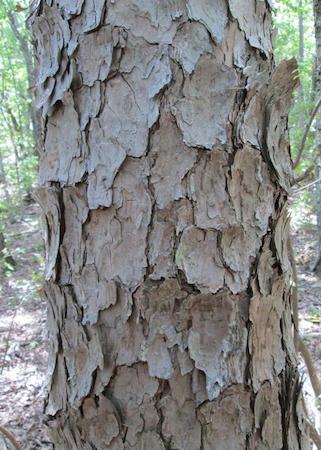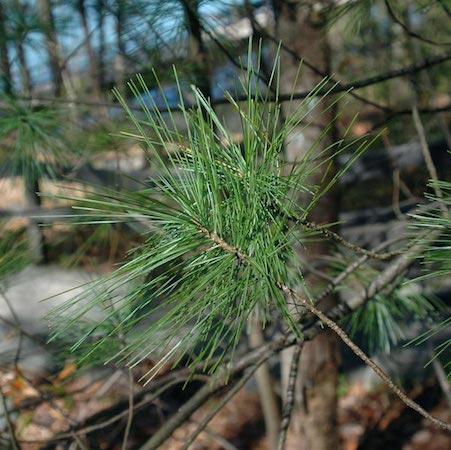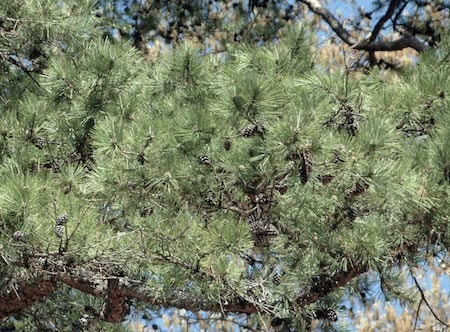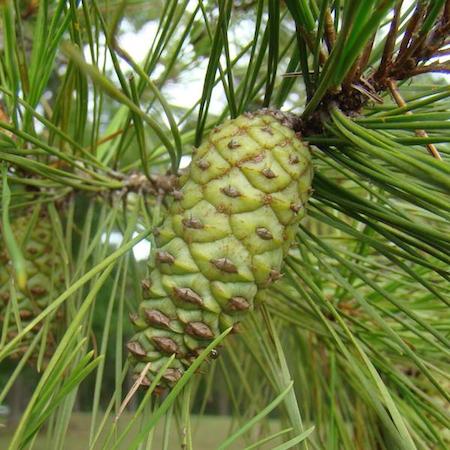Shortleaf Pine
Specifications
- Latin (scientific) name: Pinus echinata
- Life expectancy: 200 years
- Height: 106 feet
- Circumference: 124 inches
-
The height and circumference measurements listed here are for the largest-known shortleaf pine tree in Atlanta. This tree is located on private property.
-
Special characteristics:
This is a common tree in Atlanta.
There is one easy way to tell this pine from the other most common pines: its cones are comparatively short, from 1-½ inches to 2-½ inches long. Use binoculars to get a closer look if you are looking at a tall tree. The other common pines, the loblolly and white pine, have much larger and longer pine cones.
This tree usually has a long trunk with numerous limbs that don’t impart any particularly pleasing sight. The crown is thin and high up. However, the wood of this tree is harder than the loblolly and white pines. This is a good thing to know when you look out on a blustery day and see this tree swinging wildly in the wind.
-
Annoyance factors:
This tree strikes the fear of God in a lot of folks when the wind comes up. They move around like a pack of thrashing sticks gone crazy, and make a horrid hissing sound. Meanwhile the neighboring hardwoods are merely tipping their tops and flapping their leaves. No big deal. What is it with these pines?
Pines are limber trees, designed to move with the wind. They are like oversized antennas. Oak trees and the rest of the hardwoods are stiff trees. They don’t shimmy and shake like the pine trees do. The good news is that these limber trees don’t uproot all that often. The bad news is they make folks nervous.
All pines shed green branches during extreme ice storms. This is because there is a larger leaf surface for ice to build up on. This tree does better than the loblolly or white pine because the wood is stronger and the branches are shorter.
This tree may have numerous dead branches on the lower part of the tree. They fall off rapidly as compared to hardwood trees.
-
Fun Facts:
The wood of the shortleaf pine has commercial value and is used for making beams and flooring; it was also once used for ship masts. It’s also valued for firewood, as it produces a hot yellow flame but no red coals like hardwoods.
This tree is famous for lightwood, also known as fat wood. It is very resinous wood that is well known down south for lighting fires (lighter pine). You can get a piece going strong with a kitchen match and the flame on the lighter stick looks like its been soaked in gasoline. The flame just leaps up and hisses! You stick that lit piece under a stack of hardwood twigs and you have a blazing fire in no time.
-
Photo Credits:
Needles and Needle Clusters: Chris Evans, University of Illinois, Bugwood.org
Cone: Franklin Bonner, USFS (ret.), Bugwood.org
Bark: David Stephens, Bugwood.org




